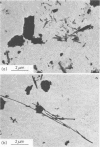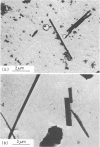Abstract
There is increasing evidence that fibre size and shape play an important part in the production of health effects related to asbestos. The dimensions of airborne fibres collected at various stages of fibre processing in three mines and six mills producing three types of asbestos were measured using phase contrast light microscopy and transmission electron microscopy. Airborne fibres of different asbestos types had appreciably different size and shape distributions. For a given asbestos type, fibres collected at different stages of processing differed in their size distributions but the differences were considerably less than between fibre types. Most of the airborne fibres to which miners and millers were exposed were short and thin and thus respirable. The physical properties which best differentiated crocidolite fibres from other types of asbestos and which had higher values determined for crocidolite fibres than those obtained for the other types, were median aspect ratio and the proportion of long thin fibres--that is, fibres less than or equal to 0.2 micron in diameter and greater than 5 micron in length as the percentage of total fibres. The median true diameter of amosite fibres was about four and three times higher than the median true diameters of chrysotile and crocidolite fibers respectively. The median true length of amosite fibres was more than four and two times higher than the median true lengths of chrysotile and crocidolite fibres respectively. The observed differences in size and shape of airborne fibres have important implications for the setting of work environmental standards and in explaining differences in health risks associated with different types of fibre.
Full text
PDF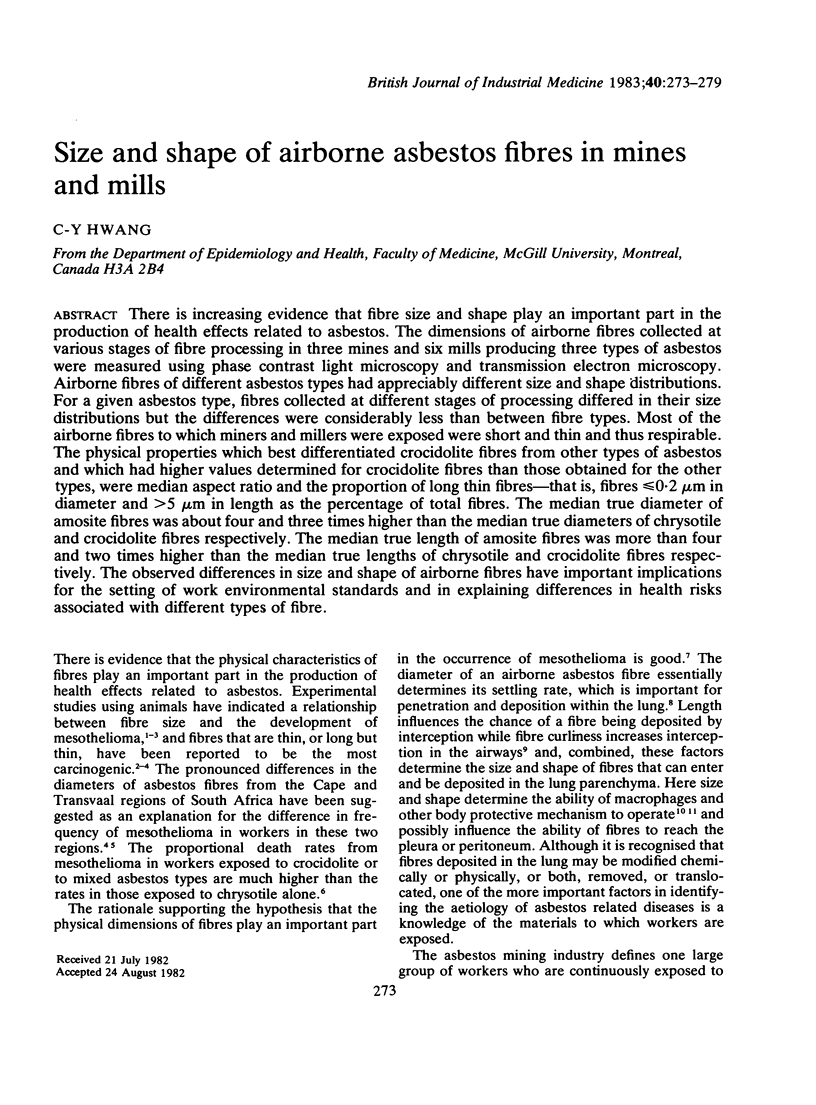
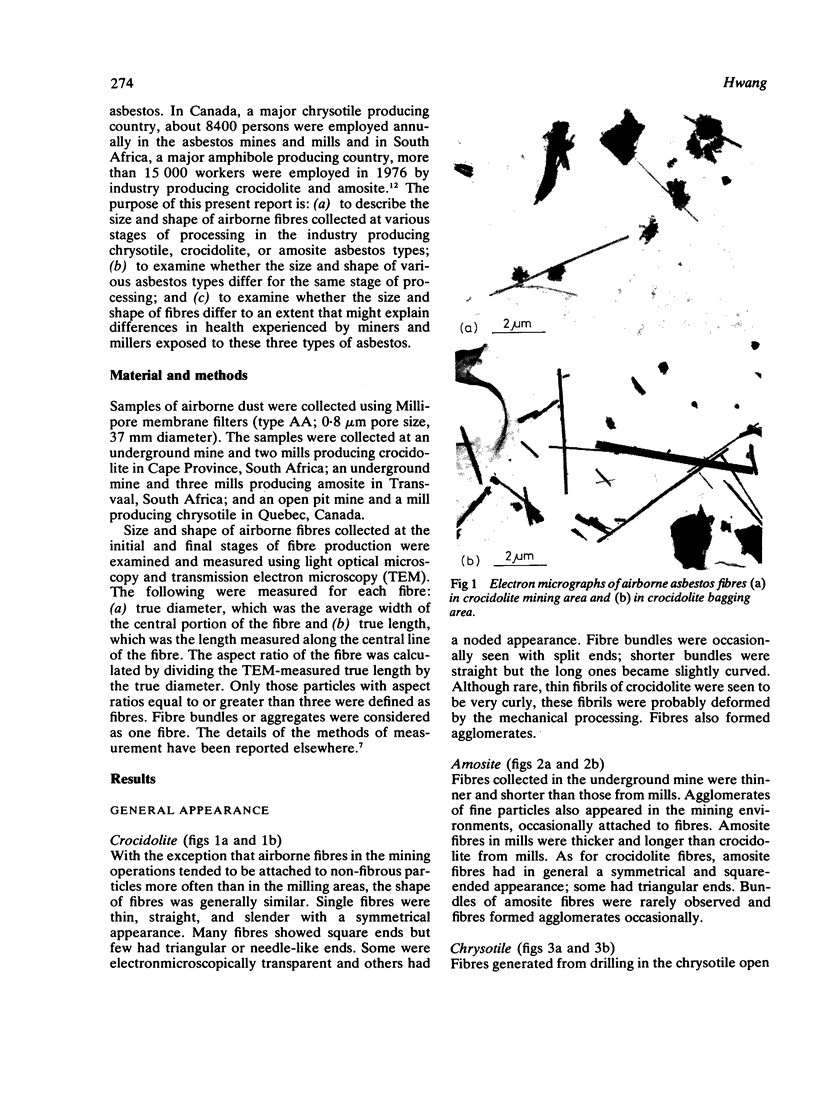
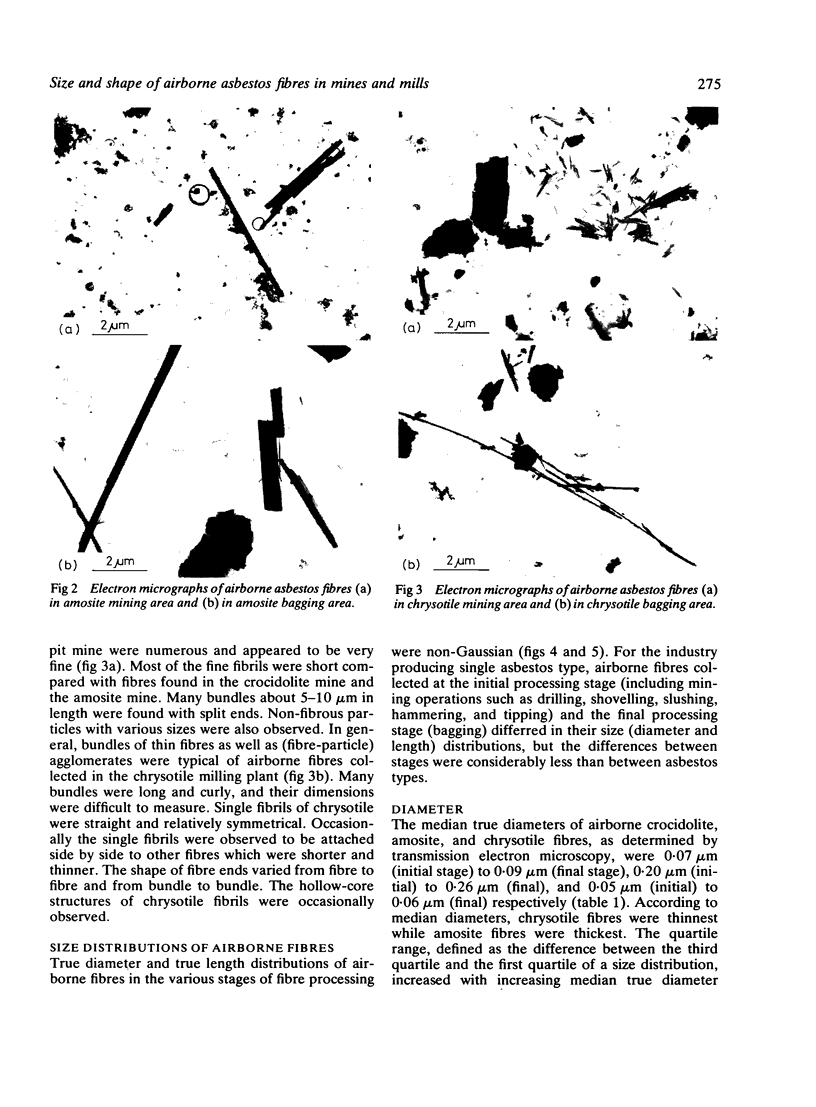
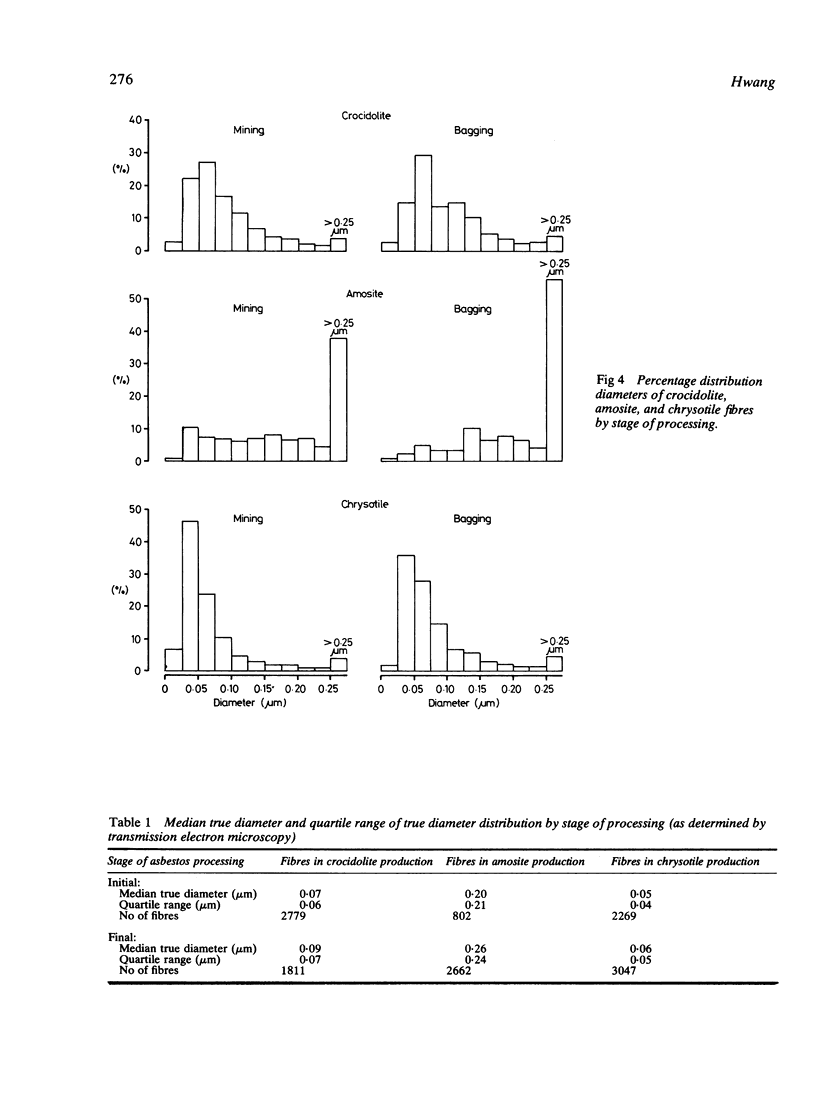

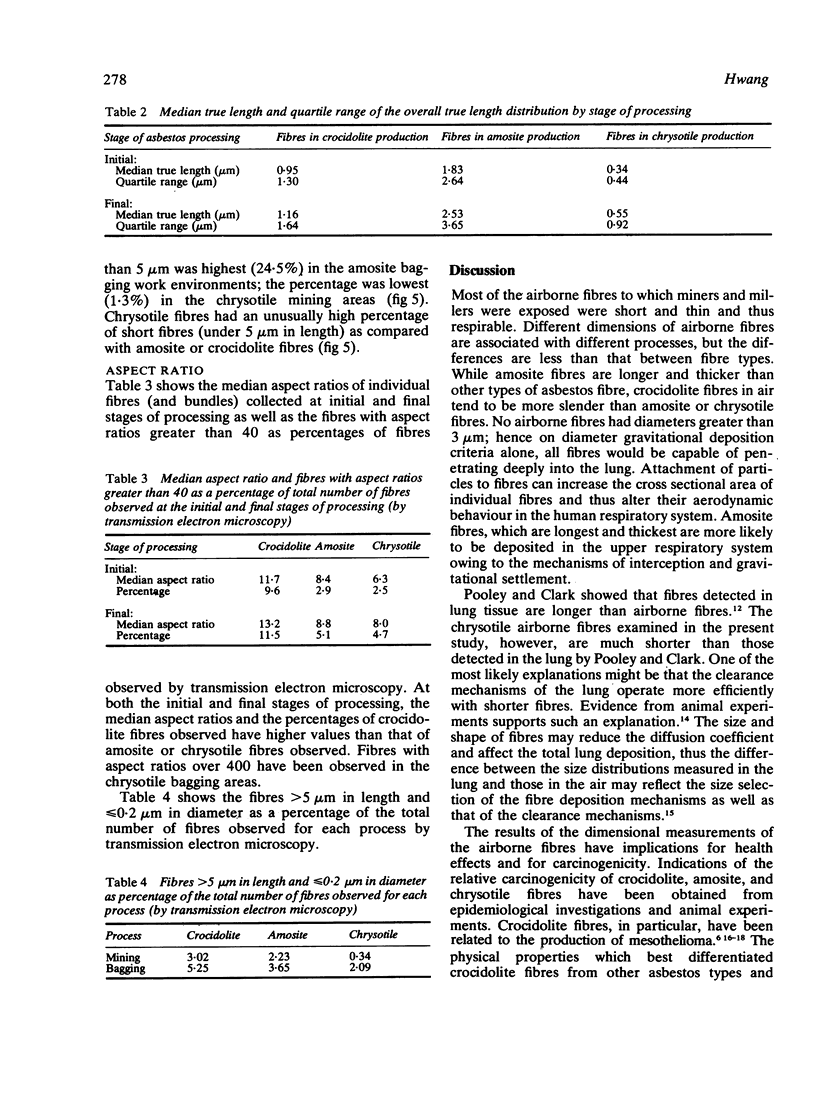
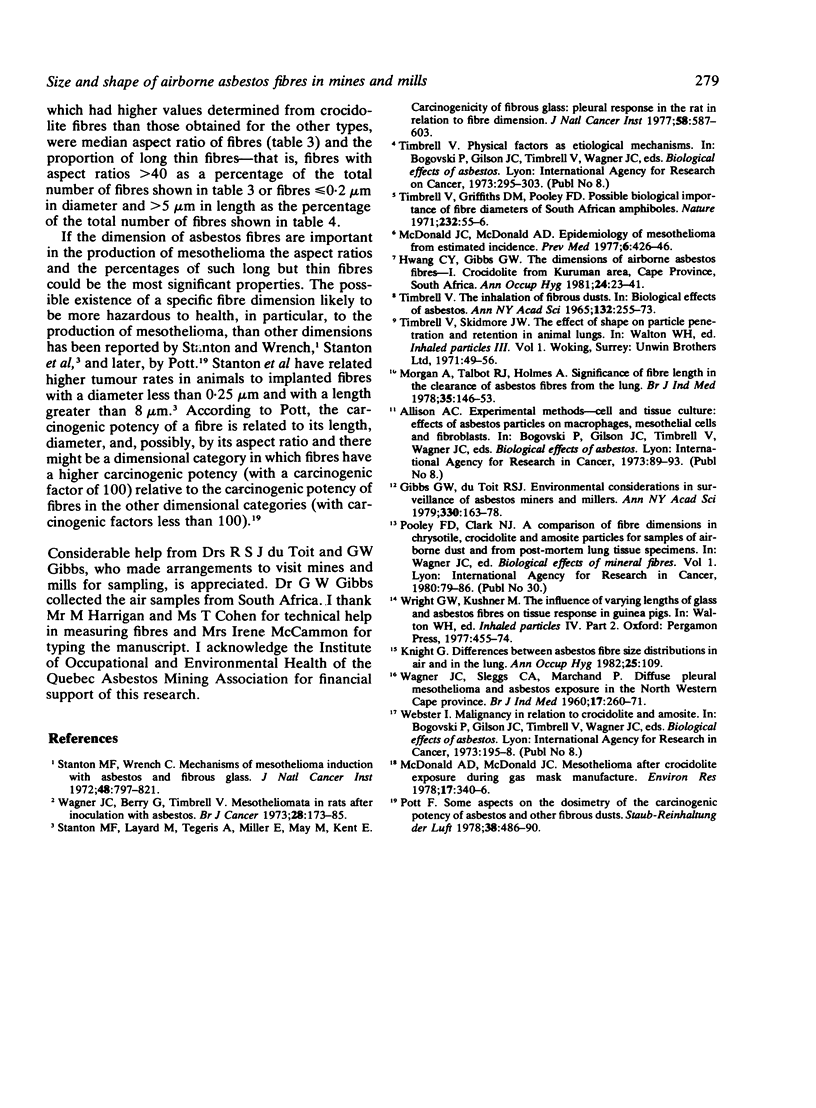
Images in this article
Selected References
These references are in PubMed. This may not be the complete list of references from this article.
- Gibbs G. W., du Toit R. S. Environmental considerations in surveillance of asbestos miners and millers. Ann N Y Acad Sci. 1979;330:163–178. doi: 10.1111/j.1749-6632.1979.tb18717.x. [DOI] [PubMed] [Google Scholar]
- Hwang C. Y., Gibbs G. W. The dimensions of airborne asbestos fibres--I. Crocidolite from Kuruman area, Cape Province, South Africa. Ann Occup Hyg. 1981;24(1):23–41. doi: 10.1093/annhyg/24.1.23. [DOI] [PubMed] [Google Scholar]
- McDonald A. D., McDonald J. C. Mesothelioma after crocidolite exposure during gas mask manufacture. Environ Res. 1978 Dec;17(3):340–346. doi: 10.1016/0013-9351(78)90038-5. [DOI] [PubMed] [Google Scholar]
- McDonald J. C., McDonald A. D. Epidemiology of mesothelioma from estimated incidence. Prev Med. 1977 Sep;6(3):426–442. doi: 10.1016/0091-7435(77)90025-1. [DOI] [PubMed] [Google Scholar]
- Morgan A., Talbot R. J., Holmes A. Significance of fibre length in the clearance of asbestos fibres from the lung. Br J Ind Med. 1978 May;35(2):146–153. doi: 10.1136/oem.35.2.146. [DOI] [PMC free article] [PubMed] [Google Scholar]
- Stanton M. F., Laynard M., Tegeris A., Miller E., May M., Kent E. Carcinogenicity of fibrous glass: pleural response in the rat in relation to fiber dimension. J Natl Cancer Inst. 1977 Mar;58(3):587–603. doi: 10.1093/jnci/58.3.587. [DOI] [PubMed] [Google Scholar]
- Stanton M. F., Wrench C. Mechanisms of mesothelioma induction with asbestos and fibrous glass. J Natl Cancer Inst. 1972 Mar;48(3):797–821. [PubMed] [Google Scholar]
- Timbrell V., Griffiths D. M., Pooley F. D. Possible biological importance of fibre diameters of South African amphiboles. Nature. 1971 Jul 2;232(5305):55–56. doi: 10.1038/232055a0. [DOI] [PubMed] [Google Scholar]
- Timbrell V. Human exposure to asbestos: dust controls and standards. The inhalation of fibrous dusts. Ann N Y Acad Sci. 1965 Dec 31;132(1):255–273. doi: 10.1111/j.1749-6632.1965.tb41107.x. [DOI] [PubMed] [Google Scholar]
- WAGNER J. C., SLEGGS C. A., MARCHAND P. Diffuse pleural mesothelioma and asbestos exposure in the North Western Cape Province. Br J Ind Med. 1960 Oct;17:260–271. doi: 10.1136/oem.17.4.260. [DOI] [PMC free article] [PubMed] [Google Scholar]
- Wagner J. C., Berry G., Timbrell V. Mesotheliomata in rats after inoculation with asbestos and other materials. Br J Cancer. 1973 Aug;28(2):173–185. doi: 10.1038/bjc.1973.134. [DOI] [PMC free article] [PubMed] [Google Scholar]
- Wright G. W., Kuschner M. The influence of varying lengths of glass and asbestos fibres on tissue response in guinea pigs. Inhaled Part. 1975 Sep;4(Pt 2):455–474. [PubMed] [Google Scholar]




